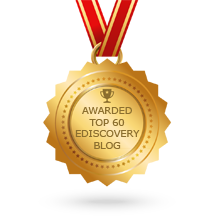The 2012 edition of LegalTech in New York yet again proved to be an opportunity that could not be missed for anyone in the ediscovery industry.
Since it has been a couple of weeks since LegalTech (and having time to catch up on my ‘day job’), I thought I would put together a short post about what I found at LegalTech this year from a New Zealand perspective. There are many others that have written very comprehensive reviews of LegalTech. Most of these articles can be found on the internet or more directly on Twitter using the hashtag #LTNY.
What is LegalTech?
As I touched on in my last post, LegalTech is the leading Legal Technology conference. It showcases all the latest in legal technology and brings together all the leading technology providers, lawyers, consultants, key judicial figures from around the world.
The conference has a number of educational tracks, looking at many legal technology issues, including ediscovery, Information management, project management and many more.
I was endeavouring to explain to a client last week the scale of what LegalTech offered. The question asked ‘was there any technology providers showing their products’ – my response was yes 3 floors worth and over 200 different exhibition booths. This is not counting the other providers that hire out additional rooms in the hotel and adjacent hotels for further meetings and demos. For many from New Zealand they would be blown away by what they see at LegalTech – I know I was the first time I ever attended.
At an event of this scale you have limited time to look at everything available. It is essential that you go in with a ‘game plan’ of what you want to see and who you want to see. If you don’t, then time will simply get away on you. It is essential that you plan in advance, or else you will get bogged down walking the exhibit hall and for some being distracted by the free give aways and glamorous girls on some at the booths!
Beyond seeing all the latest products and providers, LegalTech is a great opportunity to network with fellow people in the industry who face similar issues to what we commonly face in New Zealand. Many of the people you meet are ones that you only see once a year and usually only keep in touch with through the likes of Twitter. It is always good to compare notes on new methods – what is and is not working. Many of the issues faced in other jurisdictions are faced here in New Zealand, so it is always fascinating to get the opinions of other experts. It is also a great opportunity to bring the options available elsewhere back to those in New Zealand (as I mentioned in my previous post).
Each year there are always common themes that come out of LegalTech.
Technology Assisted Review
The talk of the town this year was Predictive Coding (or Technology Assisted Review, Computer Assisted Review or even Prioritisation Technology), or whatever you refer to it as. Let’s refer to it as Technology Assisted Review (TAR).
In short Technology Assisted Review is using the technology to group together documents that have similar content or meaning. There is far more to Technology Assisted Review than this, and for New Zealand readers, I will cover what Technology Assisted Review is in a future post, as I know some readers are already scratching their head as to what I am on about.
Methods like Technology Assisted Review are going to be important for New Zealand readers as it is one of many techniques that parties are asked to consider when they address the Discovery Checklist and commence discussions with the other parties on all matters as part of the new discovery rules.
So many providers have now developed Technology Assisted Review into their platforms and those that haven’t are very quick to point out that it is definitely on the roadmap.
‘End-to-end’ solutions
Another theme that I found was the promotion of several products as a ‘one stop’/ ‘end to end’ solution – “our product covers all you need from the EDRM spectrum”.
I think we are getting closer to this ‘holy grail’, but still some products are best used in conjunction with other more specialised solutions. What I am seeing is more products that are covering more of the EDRM spectrum – some are moving from specialising in the Review stage into Early Case Assessment and Processing, whilst others are moving from Processing and Early Case Assessment to offering Review capabilities.
In my opinion there is still room for all options – well until that true end to end solution exists – maybe LegalTech 2013!?
Other key themes included the growing importance of information governance, the general acceptance of cloud based solutions and how lawyers can leverage the use of technology through the likes of iPad type devices and various legal Apps.
Like many in the industry, I am already looking to clear my diary to attend LegalTech in 2013. It will be interesting to see where the likes of Technology Assisted Review and ‘end-to-end’ solutions have come, or what will be the latest technology theme aimed to assist the role of the legal profession.

